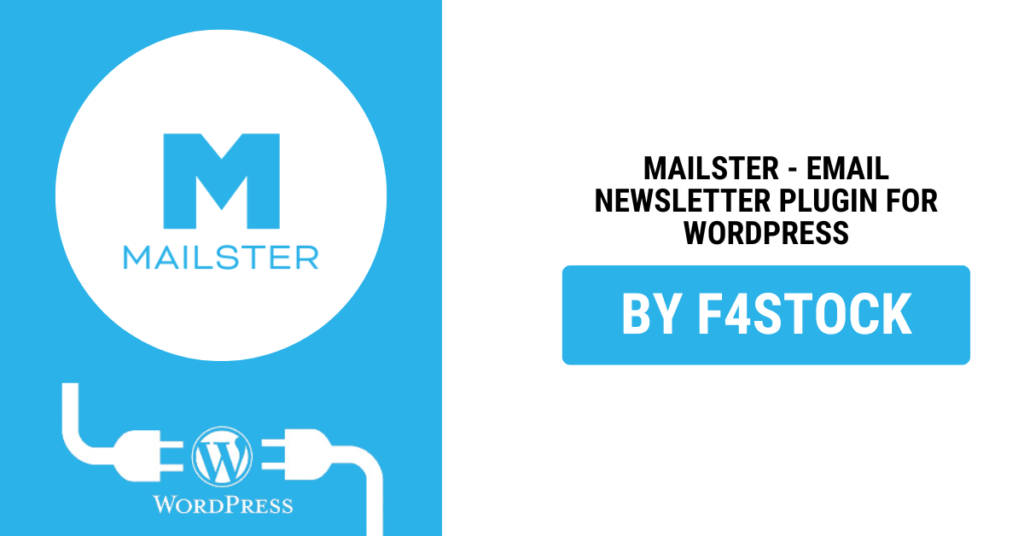In today’s fast-paced digital world, email marketing is one of the most effective ways to engage with your audience, increase conversions, and build lasting relationships with your customers. For WordPress users, Mailster offers an easy-to-use, feature-rich email newsletter plugin that can help take your email campaigns to the next level. Whether you are a beginner or a seasoned pro, Mailster is an excellent tool for creating, managing, and optimizing your email marketing efforts.
In this step-by-step guide, we’ll show you how to maximize your email campaigns using Mailster, from installation to sending out highly engaging emails.
Step 1: Install and Set Up Mailster Plugin
First things first, you need to install Mailster on your WordPress website.
- Install the Mailster Plugin
- Go to your WordPress dashboard, navigate to Plugins > Add New, and search for “Mailster.”
- Click Install Now and then activate the plugin.
- Set Up the Plugin
- After activation, you will see a new menu option for Mailster in your dashboard.
- Click on Mailster > Settings to configure the plugin settings, including setting up your email delivery options, sender details, and email tracking preferences.
Make sure to connect Mailster with an SMTP server (e.g., Gmail, SendGrid, or Mailgun) to ensure reliable email delivery.
Step 2: Build and Segment Your Email List
A successful email campaign starts with a clean and well-targeted email list. Mailster makes it simple to build and manage your subscriber list.
- Create a Subscription Form
- Go to Mailster > Lists & Subscribers > Forms to create and customize a subscription form for your website.
- Use Mailster’s drag-and-drop builder to add fields and design your form to match your site’s branding.
- Embed the form on your website’s landing pages, blog posts, or even as a pop-up.
- Segment Your Subscribers
- One of the best ways to maximize the effectiveness of your email campaigns is to segment your audience based on their interests, behavior, and other criteria.
- Mailster allows you to create and manage multiple subscriber lists. You can add tags and custom fields to segment your audience effectively.
- For example, if you run an online store, you can segment subscribers by product interests or past purchase behavior.
Step 3: Create Compelling Email Campaigns
Now that you’ve set up your email list, it’s time to create a campaign that will capture your subscribers’ attention and drive action.
- Choose a Campaign Type
- Navigate to Mailster > Campaigns and click on Create Campaign. You can choose from several types of campaigns, including regular newsletters, automated campaigns, and RSS-to-email campaigns.
- Design Your Email
- Mailster comes with a powerful email builder that allows you to create visually appealing emails without the need for coding.
- Use pre-designed templates or start from scratch with the drag-and-drop editor.
- Focus on creating compelling subject lines, clear CTAs (Call to Actions), and personalized content based on your subscriber’s interests and preferences.
- Personalize Your Emails
- Personalization is key to boosting engagement with your audience. Mailster allows you to use dynamic content and personalization tokens to include the subscriber’s name, location, or previous interactions in the email content.
- Personalization can significantly improve open rates and click-through rates (CTR).
Step 4: Set Up Automated Email Campaigns
Automation is a great way to send timely, relevant content to your subscribers without lifting a finger. Mailster makes it easy to set up automated email workflows.
- Create an Automated Workflow
- Go to Mailster > Automations and click on Create Automation.
- You can set up triggered emails based on actions your subscribers take, such as subscribing to your list, making a purchase, or abandoning a cart.
- Create a sequence of emails that will automatically be sent to your subscribers, such as welcome emails, post-purchase follow-ups, or promotional campaigns.
- Optimize for Timing
- Use Mailster’s built-in scheduling options to send emails at the optimal time. This ensures that your messages reach your audience when they are most likely to open and engage with them.
- Consider factors like time zone and subscriber behavior to increase the chances of your email being opened.
Step 5: Test, Analyze, and Optimize Your Campaigns
Once your campaign is live, it’s crucial to monitor its performance and make adjustments to optimize results.
- Test Your Emails
- Before sending an email to your entire list, perform A/B testing to compare different subject lines, content formats, and CTAs.
- Mailster allows you to run A/B tests to find out which version of your email performs better.
- Monitor Analytics
- Mailster provides robust email campaign analytics. Go to Mailster > Campaigns and select your campaign to view open rates, click rates, bounce rates, and more.
- Use this data to understand how your subscribers are engaging with your content and identify areas for improvement.
- Optimize for Better Results
- Based on the analytics, tweak your campaigns to improve performance. For example, if your open rates are low, try improving your subject lines or segmenting your list more effectively.
- Continuously test and iterate to achieve better results over time.
Step 6: Keep Your Email List Clean
A clean email list is crucial for maintaining high deliverability and engagement rates.
- Remove Inactive Subscribers
- Regularly clean your email list by removing inactive subscribers who have not opened your emails in a while. Mailster makes it easy to identify and manage inactive users.
- Maintain List Hygiene
- Monitor bounce rates, unsubscribe rates, and spam complaints to ensure your list remains healthy.
- By keeping your list updated and engaged, you’ll improve your sender reputation and email deliverability.


